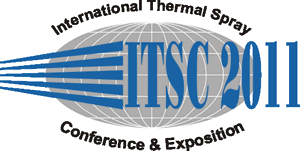
|
2751 |
|
Wednesday, September 28, 2011, Saal A 9:00 AM Aviation Industry 2 |
|
Erosion performance of heat treated WC-12Co HVOF coatings |
|
Patrick Clavette* / United Technologies Research Center, USA Bruce Laube / United Technologies Research Center, USA Aaron Nardi/ United Technologies Research Center, USA Jun Shi/ United Technologies Research Center, USA Richard Ely/ Sikorsky Aircraft Corporation, USA Louis Centolanza/ Army Aviation Applied Technology Directorate, USA |
|
Recent military action in the Southwest Asia arena has prompted the need for new coatings to combat the sand erosion problem. Helicopter rotors can impact airborne sand particles, resulting in high erosion rates. This, in turn, causes the need for frequent overhaul and repair activity, adversely affecting mission availability. Traditional polymeric coatings, which are typically used as rotor blade coatings, generally last for tens of hours in such severe conditions before repair is required. Hence, there is need for coatings which can last for up to 1000 hours without significant repair. To this end, ceramic-metallic matrix coatings have been developed. In particular, specific formulations of WC-12Co applied by HVOF (high velocity oxy-fuel) process or Super D Gun (Praxair) have shown exceptional performance in sand and rain erosion conditions as compared to the incumbent coatings. Vacuum heat treatment is employed to improve sintering and convert amorphous metallic constituents and W2C into eta phase (Co6W6C), substantially improving performance. This presentation will discuss the various considerations for this enhanced coating and describe the processing aspects which were instrumental in performance improvement. The coated specimens were heat treated in a vacuum furnace at various temperatures in the range of 540°C -1000°C and subsequently characterized using optical microscopy, a Vicker's microhardness tester, SEM (Scanning Electron Microscopy) and XRD (X-Ray Diffraction) to identify the phases generated. Additionally, in situ XRD was performed on a subset of these samples to explore the progression of the phase transformations. Samples were also exposed to sand erosion testing in 20-30 mesh Ottawa sand at 825 fps to quantify performance. The work shows that the heat treatment and the transformation of amorphous metallic phases, WC and W2C to eta phase results in higher hardness and lower sand erosion rates. |